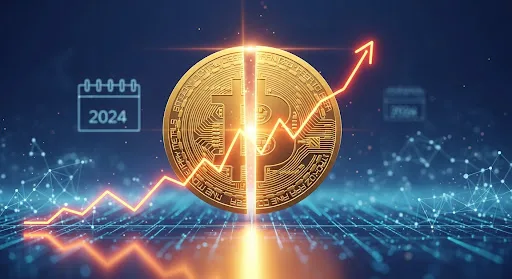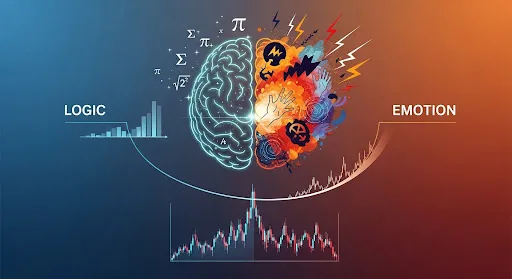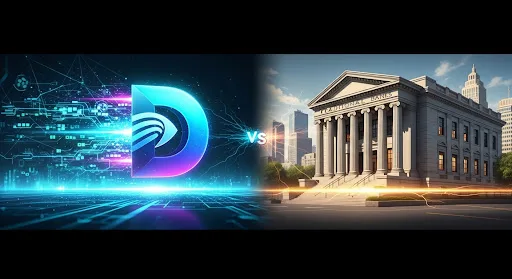Non-Fungible Tokens, or NFTs, have often been viewed as a passing fad, primarily associated with expensive digital art and cartoon avatars. However, to see them only in this light is to miss their true potential. At their core, NFTs are a foundational technology with far-reaching implications for digital finance, offering a new way to prove ownership, transfer value, and create new forms of assets. In a world where UK residents are increasingly focused on digitising their lives and managing their finances in new ways, understanding the role of NFTs is more relevant than ever. This article will go beyond the hype to explore how NFTs are transforming digital finance, from loans and real estate to the creator economy, while also addressing key UK tax and regulatory considerations.
The Core Concept: Unique Digital Ownership
To understand the role of NFTs in digital finance, you must first grasp their core function. An NFT is a unique digital token that exists on a blockchain, most commonly Ethereum. Unlike a cryptocurrency like Bitcoin, which is “fungible” (meaning one Bitcoin is interchangeable with another), an NFT is “non-fungible.” This means each NFT has a unique identifier and cannot be replicated. This uniqueness is what gives it value as a verifiable record of ownership.
While they are most famous for representing ownership of digital art, an NFT can represent a wide range of assets, both digital and physical. This includes concert tickets, property deeds, collectibles, and even intellectual property. The blockchain’s transparent and immutable ledger provides a secure, public record of who owns a particular asset, a function that could revolutionise many aspects of finance.
NFTs as Collateral and the Future of Loans
In traditional finance, if you want a loan, you might use a tangible asset, such as your house or car, as collateral. In the world of digital finance, a similar concept is emerging with NFTs. The verifiable ownership and liquidity of NFTs on a blockchain have made them a viable form of collateral. A number of decentralised finance (DeFi) protocols now allow you to borrow cryptocurrency against your high-value NFTs.
For a UK resident, this could have significant implications. Imagine owning a valuable NFT that represents a rare digital collectible. You could use this NFT as collateral to get a short-term loan without having to sell the asset itself. This provides a new form of liquidity for digital assets. The FCA has been closely monitoring the DeFi space, and any new financial products that emerge in this area would eventually be subject to regulatory scrutiny.
Fractional Ownership of Real-World Assets
One of the most promising and potentially disruptive applications of NFTs is in representing the fractional ownership of physical assets. NFTs can be used to divide a single, high-value asset, such as a piece of property or a luxury item, into thousands of smaller, tradable tokens. This allows a much wider pool of people to invest in assets that were previously inaccessible due to their high cost.
For example, imagine a rare painting valued at £1 million. The owner could “tokenise” the painting by creating 100,000 NFTs, each representing a tiny fraction of its ownership. These NFTs could then be traded on a decentralised exchange, allowing an individual to invest in a fraction of the painting for as little as £10. This concept of asset tokenisation could make investing in illiquid assets much more accessible. A similar model could one day be applied to UK property, allowing people to own a fraction of a home without needing a full deposit or a mortgage.
NFTs and the Creator Economy
NFTs are also fundamentally changing the way artists and creators earn a living. In a traditional art sale, the artist receives a one-off payment, but a smart contract embedded within an NFT can be programmed to automatically pay the original creator a percentage of the sale price every time the NFT is resold. This is called a creator royalty.
This feature provides a sustainable income stream for artists and creators, a revolutionary change from the traditional system where they have little to no control over the resale of their work. This model has already benefited a number of UK digital artists and is a key driver of the creator economy in the Web3 space. The transparent and automated nature of the smart contract removes the need for intermediaries, putting more power and profit directly in the hands of the creator.
HMRC and the Tax Implications of NFTs
While the technology behind NFTs is innovative, the tax rules in the UK are less so. HMRC treats NFTs and other cryptoassets as property, which has specific tax implications. If you buy an NFT and its value increases, you may be subject to Capital Gains Tax (CGT) when you sell it or exchange it for another cryptoasset.
The same rules apply to NFTs as they do to other cryptoassets. You have an annual tax-free allowance (£3,000 for the 2024/25 tax year) for all your capital gains, and you only pay tax on any profit above that amount. It is your responsibility to keep meticulous records of your transactions for your Self Assessment tax return, as failing to do so could lead to a tax inquiry.
Next Steps: A Glimpse into the Future
The role of NFTs in digital finance is still in its infancy, but its potential to transform our future is undeniable. The technology is moving far beyond digital art and is being applied to areas like property, lending, and royalties. For a UK resident, the most important step is to understand the underlying technology and to be aware of the significant risks involved.The market for NFTs is highly volatile, and you should only ever invest money you are prepared to lose. Your next practical step should be to research the topic in more detail and to understand the tax implications from HMRC before you even consider making an investment. The future of digital finance is being shaped today, and understanding the role of NFTs is a crucial part of that journey.

 Why Bitcoin Halving 2024 Could Trigger a Bull Run
Why Bitcoin Halving 2024 Could Trigger a Bull Run  The Psychology of Money: Emotions Driving Your Investment Decisions
The Psychology of Money: Emotions Driving Your Investment Decisions  The Future of Digital Banks: Are Traditional Banks in Peril?
The Future of Digital Banks: Are Traditional Banks in Peril?